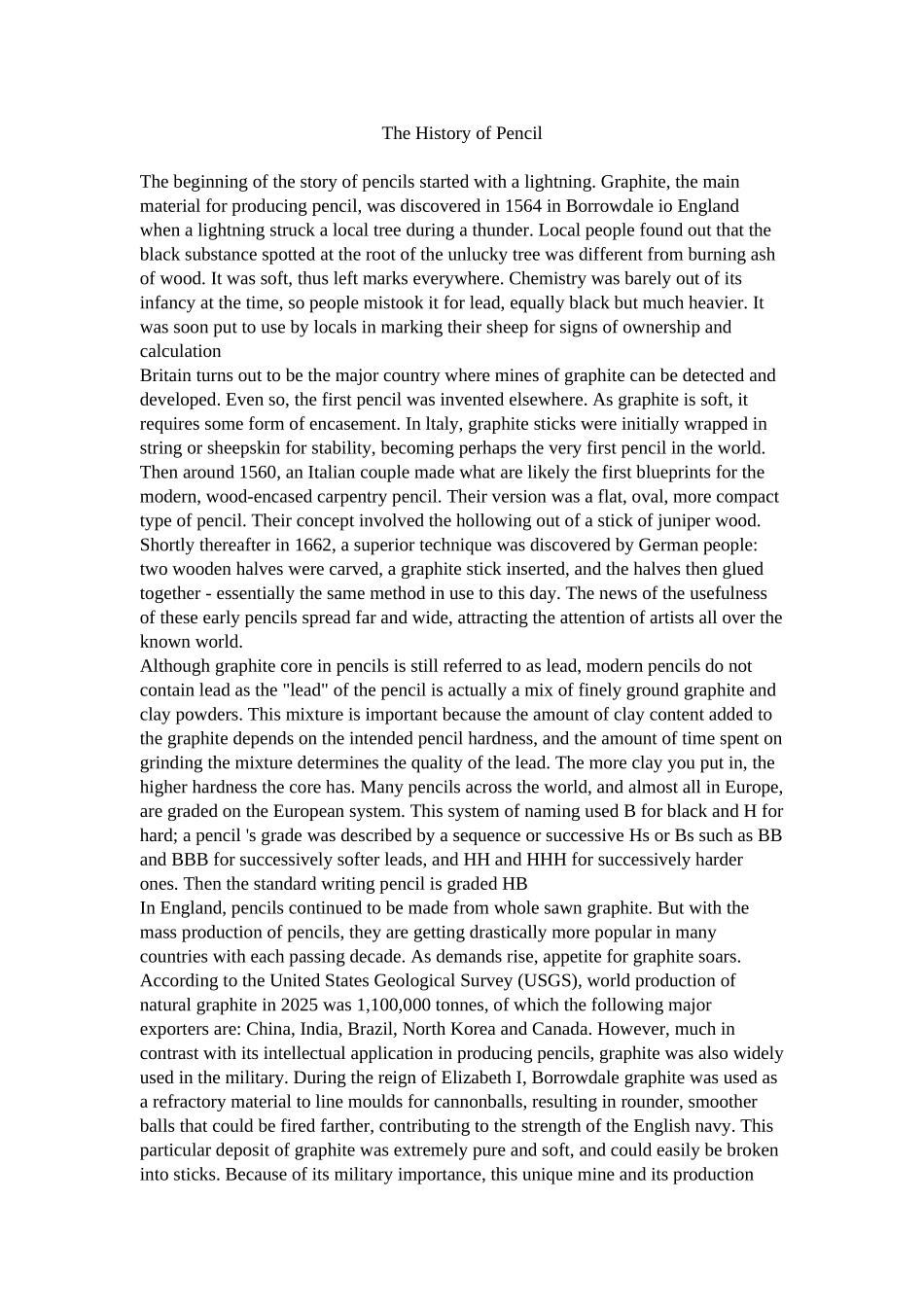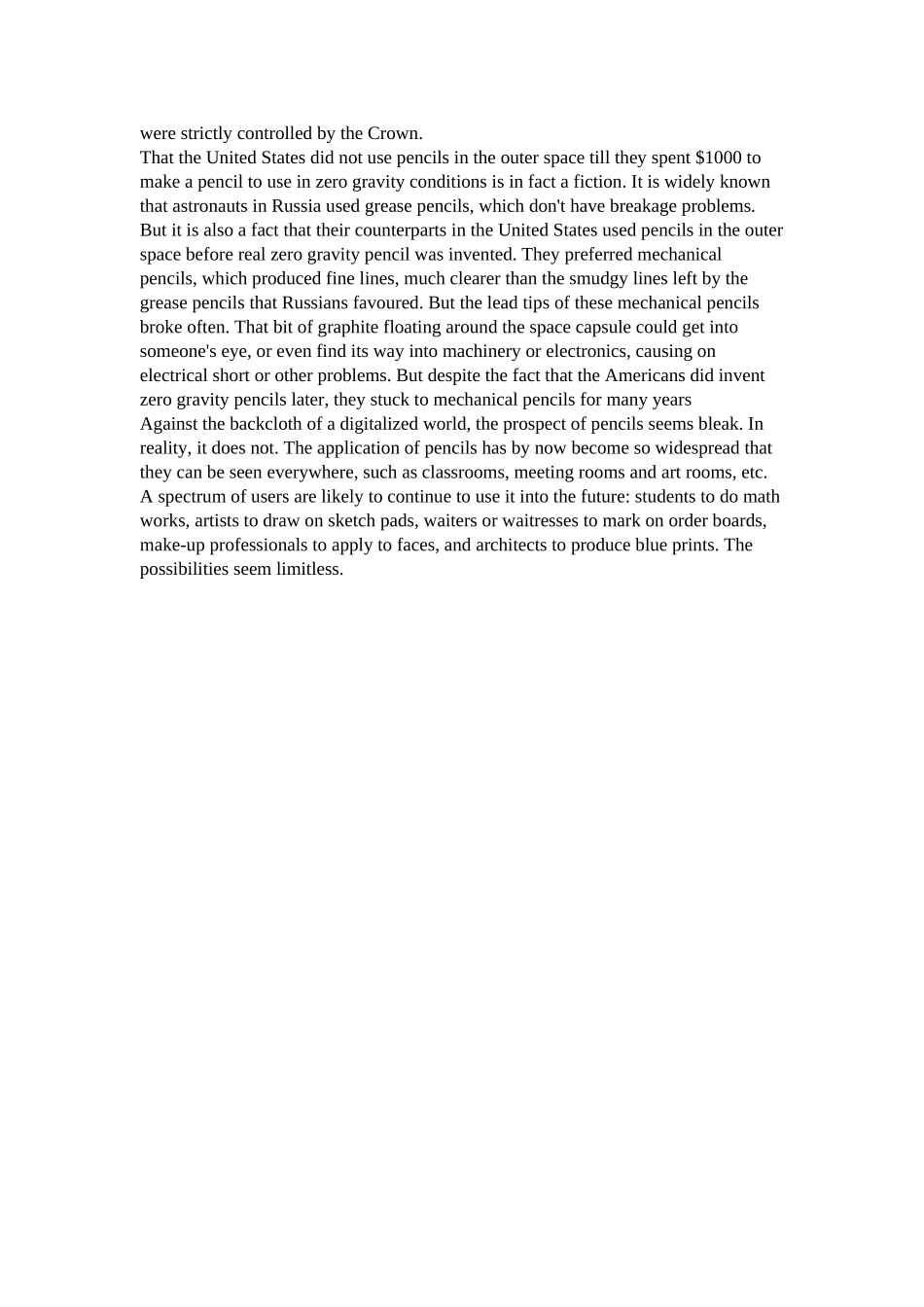The History of PencilThe beginning of the story of pencils started with a lightning. Graphite, the main material for producing pencil, was discovered in 1564 in Borrowdale io England when a lightning struck a local tree during a thunder. Local people found out that the black substance spotted at the root of the unlucky tree was different from burning ash of wood. It was soft, thus left marks everywhere. Chemistry was barely out of its infancy at the time, so people mistook it for lead, equally black but much heavier. It was soon put to use by locals in marking their sheep for signs of ownership and calculationBritain turns out to be the major country where mines of graphite can be detected and developed. Even so, the first pencil was invented elsewhere. As graphite is soft, it requires some form of encasement. In ltaly, graphite sticks were initially wrapped in string or sheepskin for stability, becoming perhaps the very first pencil in the world. Then around 1560, an Italian couple made what are likely the first blueprints for the modern, wood-encased carpentry pencil. Their version was a flat, oval, more compact type of pencil. Their concept involved the hollowing out of a stick of juniper wood. Shortly thereafter in 1662, a superior technique was discovered by German people: two wooden halves were carved, a graphite stick inserted, and the halves then glued together - essentially the same method in use to this day. The news of the usefulness of these early pencils spread far and wide, attracting the attention of artists all over the known world.Although graphite core in pencils is still referred to as lead, modern pencils do not contain lead as the "lead" of the pencil is actu...


